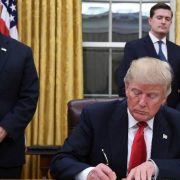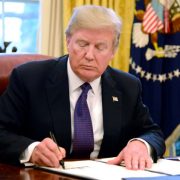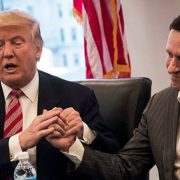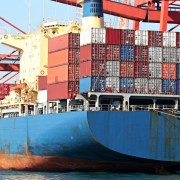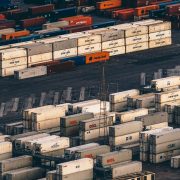In a recent podcast conversation with Dr. Per Bylund, who teaches graduate economics and entrepreneurship at Oklahoma State, we discussed the differences between GDP and GO as measures of the health of the economy.
GDP (Gross Domestic Product) is the measurement the government prefers. It emphasizes consumption as the measure of scale and growth. Politicians love it, because, if their GDP metric demonstrates some slowing down, they can prescribe Keynesian “stimulus” measures to boost it – usually more government transfers – that they claim will turn into consumer income to be spent on more consumption.
GO (Gross Output) is the alternative measure that focuses not on consumption but production. It measures the value created at every step in the supply chain, when entrepreneurial businesses sell inputs to other businesses, and so on down the chain until final goods and services are supplied to consumers.
By the GDP measure, 75% of the scale of the economy is accounted for by consumption. By the GO measure, 75% is accounted for by production.
An economy with rising GO is a healthy economy. Companies are thriving and growing, selling more inputs to other companies, jobs are expanding, investment is being made in capital goods which increases productivity, innovation is being pursued in healthy rivalrous competition between firms.
An economy with rising GDP may or may not be healthy, because it’s impossible to see how the B2B companies are performing, whether or not they are growing and adding to employment rolls. Consumption may come from incomes, or savings, or credit, or from destruction of capital.
When economists and journalists look at the Trump trade war with China, they look through Keynesian, GDP-colored glasses. They see the cost of tariffs added to the prices at which China-made goods sell to consumers in the USA. Americans will pay more! They’ll be able to buy and consume less! It’s a tax on American consumers and on consumption!
When viewed through a GO-colored lens, it is possible to see Trump’s true intent. His end-goal is not to tax consumption. It is to shift the world’s supply chains so that they don’t run through China any more, but through the heartland of the USA. Under this scenario, more American firms would be selling inputs to more American firms, and so on until the final output is consumed. The US economy would be much healthier, as measured by GO. Perhaps our neighbors Canada and Mexico would be more involved too, via a new USMCA Treaty, so that the health of the entire North American economy would be improved.
Trump talks “GO-talk” when he makes speeches about the jobs that have been lost to globalist trade policies, and when he talks about bringing manufacturing back to the USA. The globalists did great harm to the US economy by assuming that production could be shifted to low-cost labor countries while the American consumer took care of global consumption. It was a hollowing out of American gross output.
Production is the health of the economy. People produce so that they can then exchange with others. It’s an economic law: Say’s Law or The Law Of Markets. We produce in order to sell, with the intention to then use the proceeds to buy what we really want. We produce to satisfy other people’s wants, and can then satisfy our own by purchasing what others produce. We can each specialize in producing something we are comparatively good at instead of producing only what we want to consume.
If we let that production take place overseas, we lose the opportunity to sell what we produce, and the subsequent opportunity to buy what we want. The interdependence of producers within a supply chain, and of producers and consumers in the domestic economy, erodes and softens and weakens. The social fabric can weaken and even tear if those who consume prefer to buy from overseas and do not reward domestic producers with their purchases.
This does not mean that we shouldn’t trade with anyone. There’s an international distribution of comparative advantage (another law of economics!) that can provide a guide to those goods that are actually better produced overseas, freeing up domestic production to focus on its most advantaged uses. But the law of comparative advantage is rendered inoperative, or at least badly flawed, when a country with which America is trading alters the exchange with distorting subsidies to more greatly favor their domestic producers. That’ not a natural advantage; it’s a government-created advantage.
When the globalists enthusiastically divert production into these artificially low-cost overseas manufacturers, they are often indiscriminately diverting capital and skills and labor that can be better utilized serving American-based production. We should be applying our own technology and our own efficiency-enhancing expertise to our domestic supply chains, aiming at higher quality, speedier and better innovation, and agile recombination of capital and resources.
Trump may not articulate this very well, and he may leave himself and his trade negotiators open to the accusations of waging a trade war that’s bad for consumption. He is not a theoretician, and can often leave himself open to theoretical second-guessing.
But a simple examination of the language of the theoreticians is enough to reveal that they don’t have much of an argument for the realities of the present day. For example, they like to talk about trade “headwinds” caused by the Trump tariff, revealing that their thinking is stuck in the days of sailing ships and the clipper trade. And they use these “headwinds” to justify interventions like Fed rate cuts, which simply parrots the kinds of policies that China is implementing.
Taking the long view, Trump’s ends are meritorious: make the economic adjustments that will result in more US production and a healthier economy based on a GO metric. We can’t know if the tactics he is pursuing will get us there, but he seems to be able to adjust on the fly and we should cheer him for his goal.
Hunter Hastings hosts the podcast Economics For Entrepreneurs.

